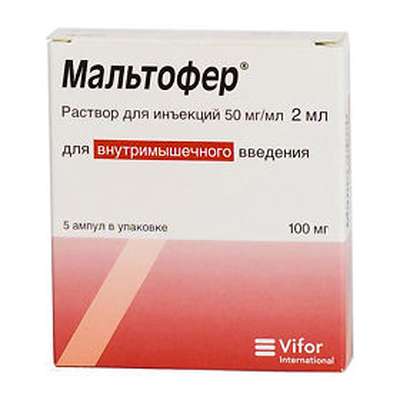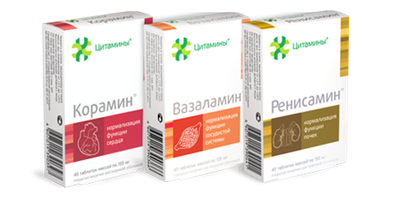Instruction for use: Relief Advance
I want this, give me price
Dosage form: ointment for rectal and external use plastic tube
Active substance: Benzocaine
ATX
D04AB04 Benzocaine
Pharmacological group:
Local irritants
The nosological classification (ICD-10)
I84 Hemorrhoids: Painful hemorrhoidal nodes;External hemorrhoids; Internal hemorrhoids;Inflammation of hemorrhoids; Exacerbation of hemorrhoids; Chronic bleeding hemorrhoids; Acute hemorrhoidal attack
K60 Crack and fistula of anus and rectum area: Anal fissure; Acute anal fissure; Paraproctitis chronic; Perianal fissure; Surface fissure of anus; Fistulas of the rectum; Rectum crack; Anal cracks; Cracks in the anus; Rectal cracks; Chronic anal fissures Chronic periproctitis; Watchdog
K94 * Diagnosis of digestive tract diseases: Hepatic and splenic scans; Visualization of the liver by invasive methods; Isotope scintigrams of the liver; Laparocentesis; Ultrasound examination of the liver; Magnetic resonance imaging of the liver; Computed tomography of the liver; Esophageal Manometry; Anoscopy; Visualization of the biliary tract; Ultrasonic visualization of the liver; Gastroscopy; Intestinal degassing before diagnostic tests; Degassing of the intestine before X-ray examination; Gastrointestinal diagnostics; Diagnosis of bleeding from the small intestine; Diagnosis of focal pathology of the liver; Diagnosis of secretory ability and acid-forming function of the stomach; Diagnostic intervention on the large intestine; Duodenal sounding; Duodenoscopy; Instrumental studies of the abdominal cavity organs; Intraoperative cholangiography; Irrigoscopy; Examination of gastric secretion; Gastrointestinal; Study of acid-forming function of the stomach; Study of the secretory function of the stomach; Colonoscopy; Controlling the effectiveness of lithotripsy; Determination of the degree of hypersecretion in duodenal ulcer; Preparation for diagnostic tests; Preparation for X-ray and instrumental methods of abdominal examination; Preparation for X-ray and ultrasound examination of abdominal organs; Preparation for X-ray or endoscopic examination of the digestive tract; Preparation for X-ray examination of the gastrointestinal tract with contrasting; Preparation for roentgenological examination of gastrointestinal tract with application of barium; Preparation for X-ray examination and ultrasound of the abdominal cavity organs; Preparation for X-ray examination or ultrasound of the abdominal cavity organs; Preparation for ultrasound and X-ray examination of the abdominal cavity organs; Preparation for endoscopic examination of the lower parts of the colon; Preparation for endoscopic or roentgenologic examination of the lower intestine; Preparation of the lower GI tract for endoscopy; Preparation of the colon for instrumental and radiographic examinations; Preparation of the colon for X-ray and endoscopy; Recto-Humanoscopy; Rectoscopy; Radiography of the digestive tract; X-ray diagnosis of achalasia of the esophagus; X-ray diagnosis of diseases of the digestive tract; X-ray diagnostics of the digestive tract; Radiocontrast examination of bile ducts Radiocontrast study of the digestive tract; Radiographic diagnosis of gastrointestinal tract; X-ray examinations of the digestive tract; X-ray examination of the duodenum and gallbladder; X-ray examination of the stomach; X-ray examination of the biliary tract and gallbladder; X-ray examination of the digestive tract; X-ray examination of the esophagus; Retrograde cholangiopancreatography; Retrograde endoscopic pancreatocholangiorentgenography; Sonography of the gastrointestinal tract; Splenoportography; Ultrasound of the abdominal cavity organs; Functional X-ray diagnosis in diseases of the stomach; Functional X-ray diagnosis in diseases of the intestine; Cholangiography; Cholangiography in cholelithiasis; Cholangiopancreatography; Cholecystography; Esophagoscopy; Endoscopic retrograde pancreatography; Endoscopic retrograde cholangiopancreatography; Endoscopic interventions; Endoscopic examination of the digestive system; Endoscopic examination of the lower parts of the large intestine; Endoscopic examination of the digestive tract; Endoscopy; ERCPR; Panendoscopy
Z98.8 Other specified post-surgical conditions: Purulent complications in the postoperative period; Purulent complications of surgical operations; Postoperative liver dysfunction; Postoperative vomiting; Postoperative complications;Postoperative period; Early postoperative period
Composition
Suppositories rectal 1 supp.
active substance:
benzocaine 206 mg
auxiliary substances: cocoa beans oil - 1448 mg; corn starch - 340 mg; methylparahydroxybenzoate - 2 mg; propyl parahydroxybenzoate 4 mg
Ointment for rectal and external use 1 g
active substance:
Benzocaine 200 mg (20%)
auxiliary substances: mineral oil - 120 mg (12%); Vaseline - 647 mg (64.7%); propylene glycol 20 mg (2%); methylparahydroxybenzoate 2.4 mg (0.24%); propyl parahydroxybenzoate 0.6 mg (0.06%); sorbitan monostearate - 10 mg (1%)
Description of dosage form
Suppositories rectal: opaque, from white to light yellow in the form of a torpedo.
Ointment for rectal and external use: homogeneous, white with a yellowish tinge, which does not contain extraneous inclusions.
Pharmachologic effect
Mode of action - local anesthetic.
Pharmacodynamics
Benzocaine has a local anesthetic effect, does not have a resorptive effect.
Cocoa butter (in the composition of suppositories) has a softening effect.
Indication for the Relief Advance
As a local anesthetic:
hemorrhoids;
cracks in the anus;
after proctologic operations;
conducting diagnostic manipulations.
Contraindications
increased individual sensitivity to the components of the drug;
thromboembolic disease;
granulocytopenia.
Application in pregnancy and lactation
Rectal suppositories
During pregnancy and lactation, use the drug after consulting a doctor.
Ointment for external and rectal use
Caution should be used in pregnant women and nursing mothers. The drug should be administered with caution in cases where the expected benefit to the mother exceeds the risk to the fetus and the baby.
Side effects
Allergic reactions, local reactions (hyperemia, pruritus).
Dosing and Administration
Rectal suppositories
Rectal, after carrying out of hygienic procedures.
Adults and children over 12 years of age: enter into the rectum for 1 supp. up to 4 times a day (in the morning, at night and after each emptying of the intestine).
Children under 12 years: apply as directed by a doctor.
Ointment for rectal and external use
Locally, rectally, after hygiene procedures. Remove the protective cap from the applicator, attach the applicator to the tube and squeeze out a small amount of ointment to lubricate the applicator.
Apply the ointment carefully through the applicator to the affected areas on the outside or inside the anus - up to 4 times a day in the morning, in the evening and after each emptying of the intestine.
After each use, rinse the applicator thoroughly and place it in a protective cap.
Children under 12 years of age should be used only on the advice of a doctor.
Overdose
Symptoms: may be associated with the pharmacological effects of benzocaine. Its systemic absorption in case of an overdose can be manifested by drowsiness, anxiety, excitation, in severe cases - seizures. Very rarely large doses of benzocaine can cause methaemoglobinemia, which is manifested by respiratory disorders and cyanosis.
Treatment: iv injection of methylene blue is a specific treatment for this condition.
Special instructions
It is not recommended to use the drug for children under 12 without consulting with a doctor.
In case of accidental ingestion, immediately seek qualified help.
With abundant bloody discharge from the anus or the preservation of painful symptoms for more than 7 days, consult a doctor.
Release form
Suppositories rectal, 206 mg. For 6 soups. in a blister of opaque PVC film. 2 bl. in a cardboard box.
Ointment for rectal and external use, 20%. For 28.4 grams in a plastic tube with a lid of polypropylene. The neck of the tube is sealed with a protective foil packaging. Tuba with the PE applicator in a cardboard bundle.
Conditions of leave from pharmacies
Without recipe.
Conditions for storing the drug Relief Advance
At a temperature of no higher than 25 ° C.
Keep out of the reach of children.
Shelf life of the drug Relief Advance
2 years.
Do not use after the expiry date printed on the package.

 Cart
Cart





